The Apple iPad 2 Review
by Brian Klug, Anand Lal Shimpi & Vivek Gowri on March 19, 2011 8:01 PM ESTSmart Covers
Lately Apple has been trying its hand at first party case solutions. It stated with the bumper on the iPhone 4, carried over to the original iPad, and continues now with the iPad 2. Bumpers were an interesting idea, though clearly designed to mitigate unintended antenna attenuation from holding the phone in your hand, and the first iPad case, while novel, never felt quite right in the hands and had an unhealthy attraction to table crud. I also go over smart covers in our video review.
Third time's a charm, and this time they're both better engineered and endowed with the magic of magnets - they're called called smart covers.
I told Anand that I wasn't going to buy another expensive first party cover at launch just because there weren't any other options, yet here I am with a black leather smart cover.
Smart covers come in two materials - polyurethane and leather. There are five neon polyurethane colors and five more subtle/traditional leather colors. Polyurethane runs $39.00, leather will cost you a somewhat staggering $69.00. I opted for the black leather, Anand opted for neon orange and blue to match the official AnandTech color scheme (why didn't I think of that?).
The polyeurethane covers have a soft textured feel to the front and get the job done at the same price as the first Apple iPad cover. The colors aren't quite as saturated as you'd expect (it's more of a light blue and creamsicle rather than neon blue and lambo orange) but they still look pretty good.
The leather version feels and looks real, and passes the standard sticky test for leather. The outside of the cover is the actual leather surface, whereas the inside is a soft microfiber material. Both the polyurethane and leather models have this microfiber interior. The benefit is that it does keep the screen somewhat clean, the only downside is that it doesn't clean along the vertical strips where the smart cover folds. After a couple of days, you end up with some vertical strips of greasiness punctuated by thick ones of clean.
The smart cover aligns and attaches to the body of the iPad 2 using six magnets along its side that line up with a similar set of magnets on the device. When I acquired the smart case at launch, I immediately set out to determine what magnetic wizardry was at play and borrowed some magnetic viewing tape from my friend Alex (who wrote the glass section). Also no, the smart cover does not work with the iPad 1.
You can clearly see the set of magnets on the iPad 2 and smart cover that are used for alignment using the magnetic viewing film. This strip is from United Nuclear, but there are other vendors online. There are two visible sets of three magnets on the iPad 2 which mate up with corresponding patterns of magnets on the smart cover.
The magnetic viewing film is comprised of tiny beads with a small nickel filament inside, and are suspended in a fluid between two transparent polymer sheets. One side of the bead is reflective and appears light green, the opposite side is matte and appears dark green. The nickel filament orients along the magnetic field, and just like that we can see it.
The iPad 2 also has magnets on the far right side to keep the smart cover latched closed. These mate up to an appropriate set of magnets on the smart cover. Inspecting the smart cover carefully also shows a circular magnet which is used to trigger the iPad 2’s magnetic lock sensor.

The circular magnet above the strips of bar magnets is used for signaling the closed/lock sensor on the iPad 2.
Unsurprisingly, you can also make MacBooks and MacBook Pros that use the same kind of magnetic latch sensor go into standby by waving the smart cover or iPad 2 over just the right place. There’s an excess of magnets on the far right of the smart cover to hold the flap in position when rolled upon itself. The only other unintended consequence of putting so many magnets in the iPad 2 is that it sticks to every ferromagnetic surface. The cafe I frequent has metal tables, and the iPad 2 literally sticks to the surface until you yank it off.
The first time you fire up the iPad 2, the area in general settings lacks any toggles for the smart cover lock. After you attach the smart cover and activate the sensor once, a new toggle appears. It's one of those subtle things that Apple does which fits with the - keep extraneous settings and indicators hidden when they're not actually doing something - philosophy.
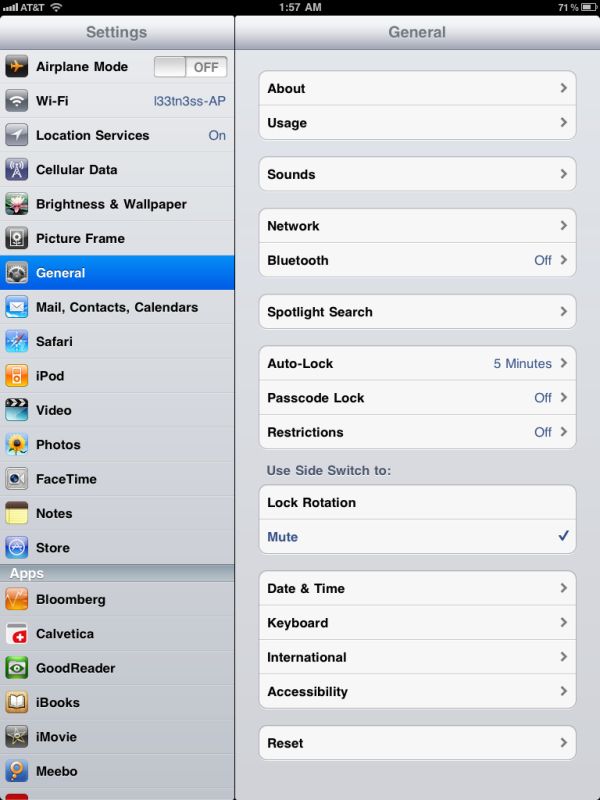
Left: Before attaching the smart cover for the first time, Right: After attaching the smart cover.
The smart cover can be rolled onto itself and into a triangle, which then angles and supports the iPad at 15 degrees for typing on a flat surface.
Push the iPad 2 further, and it'll stand upright at 115 degrees for use as a more traditional display, say if you have the Bluetooth keyboard or want to use it to watch movies.
The smart cover, while novel, has a few puzzling flaws. First up is what position to put the flap when the cover is opened and held in the hands. Folding the smart cover around to the back works, but magnetic attraction is weak and flap doesn’t stay in place at all. This is how users place the flap in videos on Apple.com and in marketing materials. The cover also makes it difficult to access the power and volume buttons in this position, though admittedly locking functionality with the smart cover should be left to the flap.
Left folded completely over, the second problem is that the cover then completely occludes the iPad 2’s rear facing camera. The other option is to fold the cover in half, which is probably the best solution. You don’t cover up the camera, and the cover doesn’t flap around as much. It still isn’t entirely secure, however.
Third, the smart cover leaves you with the same limitation as the first Apple iPad case: there's no way to make the iPad 2 stand up in portrait mode. There are a couple of landscape options as we described earlier but if you want to prop up the iPad 2 in portrait mode you're out of luck.
The final problem is that the smart cover doesn’t protect the rear of the iPad 2, which any iPad user will tell you is the surface that immediately starts to show aging from scuffing, scratching, denting, and white aluminum oxide from handling. Aluminum is a soft material, and while the iPad 2's aluminum seems to be harder and less porous than the MacBook Pro, it still picks up table crud like nobody's business. It’s frustrating because the smart cover is otherwise one of the most innovative parts of the iPad 2 experience.
As a stand, the smart cover is excellent, and it’s also nice to see Apple finally adopting some magnetic signaling for when to lock the device. Any Blackberry user will tell you this isn’t anything new at all, but execution here is indeed awesome.


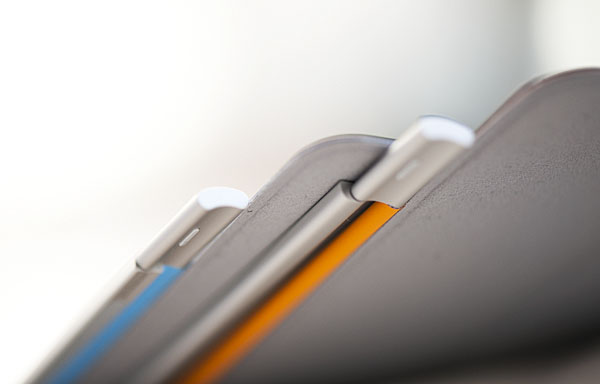
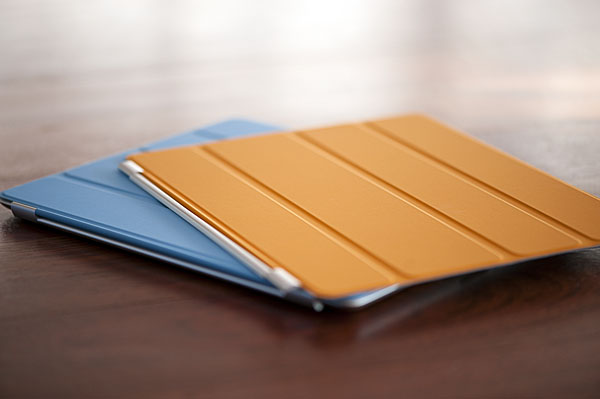
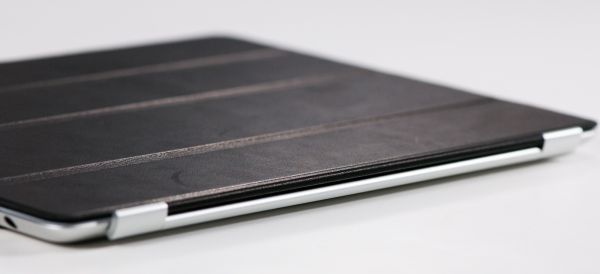
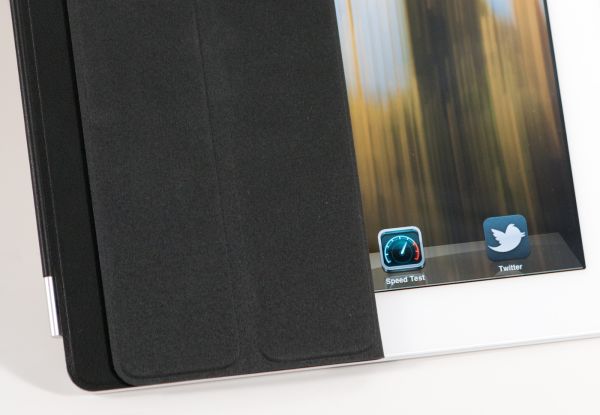
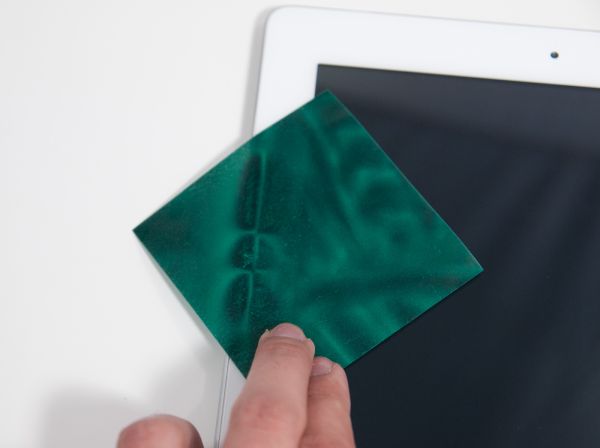
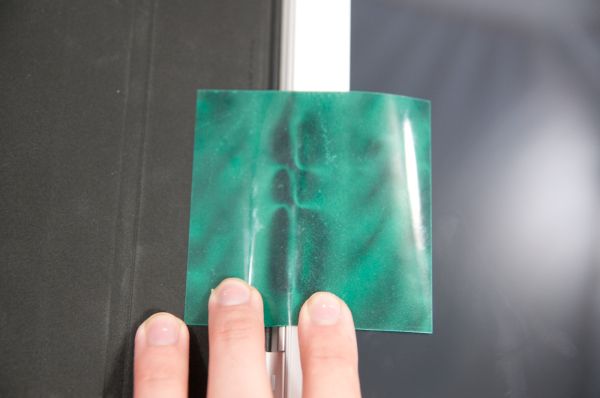







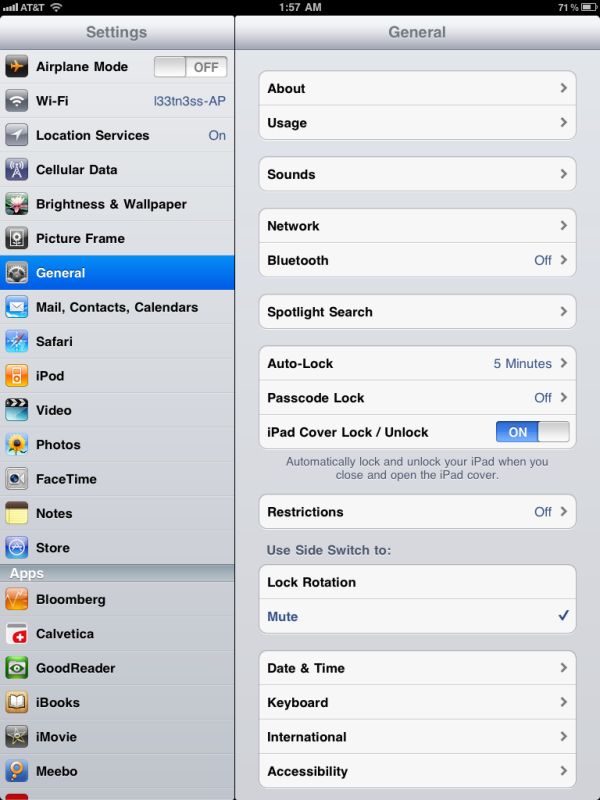
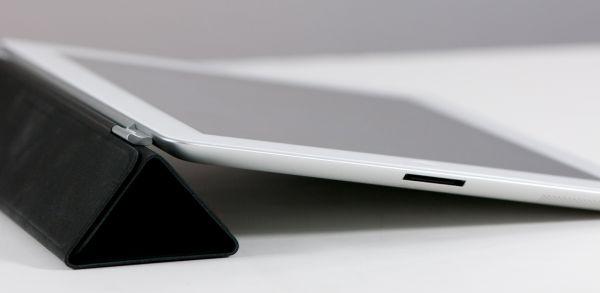
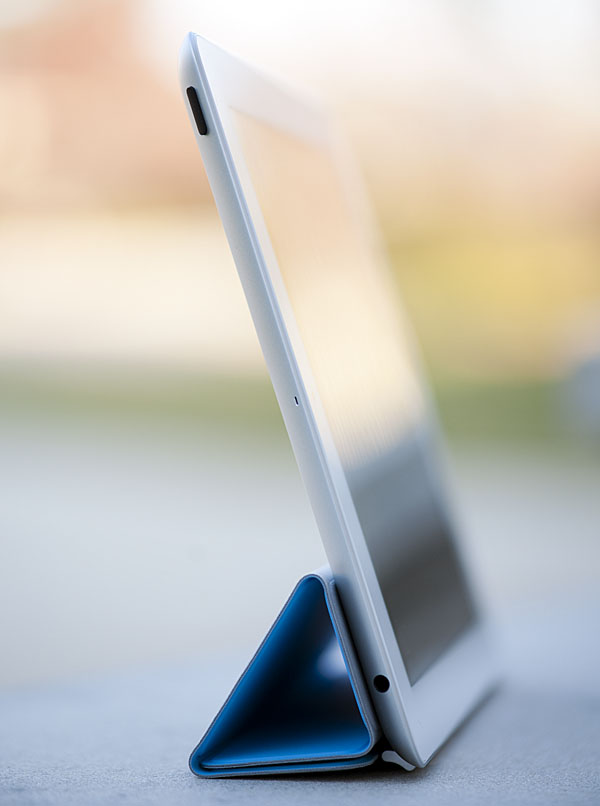
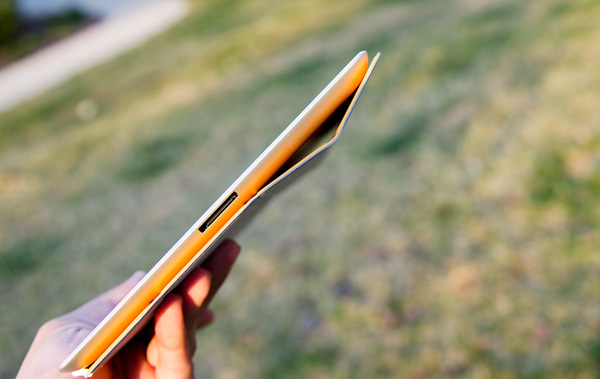
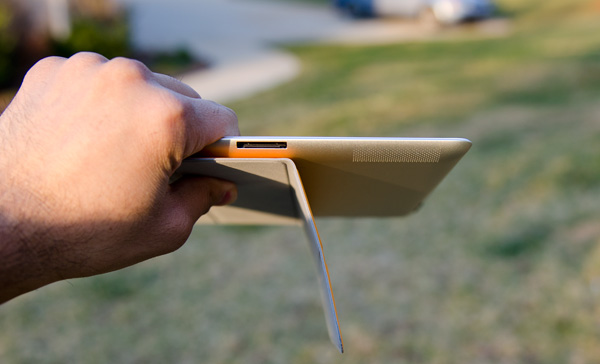








189 Comments
View All Comments
FrederickL - Saturday, March 19, 2011 - link
I have to say that I largely agree even though I perhaps would not use PrinceGaz' somewhat "undiplomatic" description of the iPad's current customer profile! However, I am obliged to agree that tablets of this size are of little interest (IMO) until they are functional enough that they can _replace_ ones laptop. The case for buying an iPad (fine piece of content consumption kit as it is) falls down at that first fence as far as I am concerned. In general terms my mobile device needs are met by my Desire Z. A third or fourth generation10 - 11 inch tab with a full slide out qwerty (either Honeycomb or Win 8 ARM, the iOS is not to my taste) with more connection/plug options than you can shake stick at, with a docking station+large screen at home - now THAT would open my wallet!
dhuhtala - Sunday, March 20, 2011 - link
I tend to agree - I've always carried a Blackberry phone instead of an iPhone just because it has a slide-out keyboard...I will not compromise on that! This makes the device really practical and I use it a lot.That's why I'm closely watching the ASUS eee Slider - a tablet with a slide out keyboard - that sounds like it will be much cheaper than the Xoom (rumour has it at $500.
The Tegra 2 probably won't meet my requirements for playing MKV video files though, from what I've gathered...
http://www.reghardware.com/2011/03/15/preview_tabl...
solipsism - Sunday, March 20, 2011 - link
You’re the minority. The majority of buyers just want something that works, which is why the techtarded people of the world are jumping into simpler devices for email and browsing, not building their own PCs and running a home-brew version of Linux.synaesthetic - Sunday, March 20, 2011 - link
A netbook can check email and browse the internet for significantly less money. Most people I know, even the techtarded as you so colorfully put it, realize this and do not buy an iPad.The people I know who buy iPads are college students who get Mommy and Daddy to pay for it, and hipsters.
doobydoo - Sunday, March 20, 2011 - link
I couldn't disagree more.I would say that technically savvy people are the ones who are MORE likely to buy an iPad.
I say this as a technically savvy person who has not yet bought an iPad, but can see the appeal:
Firstly - the iPad is lighter, thinner, and has better battery life than most netbooks.
Secondly - it's more capable, in that u wont have to wait around for Windows or whatever OS you're using to load, the apps are designed for the platform and the device's capabilities so it's actually quicker. Games, for example, are much nicer to play and to control on an iPad when compared to a netbook.
Thirdly - it's more convenient in certain situations - u dont need to find a table to set it on or put it on ur lap - you can just hold it, such as when standing up or walking along, or where ur sitting at a table with food all over it.
Fourthly - it's touch screen, extremely advantageous in certain situations. For example, the iPad makes a much better presentation device than any netbook can.
It's such blind ignorance of a lot of people on here to assume that it's non-techy people who buy iPads. It's the non-haters, who buy iPads. The people who want to embrace the latest technology and actually see what it's about before dismissing it with some pathetic stereotype.
medi01 - Tuesday, March 22, 2011 - link
It's a "for fun" device, so if you buy it for some thing else, I doubt your "tech savyiness".And for some, not being able to read stuff you've written to your own device, is a show-stopper. Calling this "hate" is silly.
synaesthetic - Sunday, March 20, 2011 - link
It pretty much is a toy, but I really think smartphones are better toys. They're smaller, and you carry your phone anyway, so why not game on it to kill some time between appointments?Rick83 - Saturday, March 19, 2011 - link
I still stick to my 5" tablet (though something slightly larger might work also...but 7" is already too much).That I can carry around all day (when I want to, and keep a separate non-smart phone that does telephone well enough) and yet it is much more useful than the 4" and 3.5" smart phones. I can comfortably hold it with one hand, buttons are nice and big in landscape mode, the dock gives me USB host, there's BT for keyboards as well, dock with hdmi-out, analog video-out...basically it does anything I would ever need, in the ideal portable form factor.
It could do with a marginally better touch screen and build quality, and performance and stability aren't that great, but considering it predated the first iPad by about 6 months, I'm willing to accept the odd quirk. Also, it still works after quite some use over the last 18 months, with no visible battery life issues.
I hope that the mini-tablet form factor will be explored some more in the future, I would be willing to replace my current device with something similar once the warranty has expired...
Oh did I mention that it cost me less than a third of an iPad? (But, no, no flash either ;))
tzhu07 - Saturday, March 19, 2011 - link
I've been trying to figure out a use for the iPad, and the only thing I can think of is that it's good for doing really simple things and taking notes. Also, when you take it out in front of a client during a lunch meeting, it tends to impress them.But, yeah, I find that there isn't really a need for a device that bridges the gap between a laptop and a smartphone....yet.
vision33r - Saturday, March 19, 2011 - link
It's all about the Apps, regardless which OS they are useless without apps.The iPad has tons of productivity and enterprise ready apps. Would like to see an iMovie clone on Android or some quality productivity apps. So far only iOS has the most real apps.